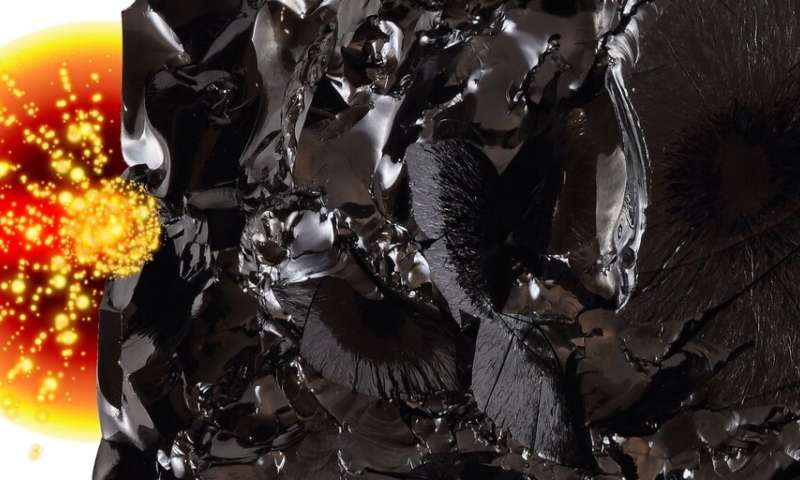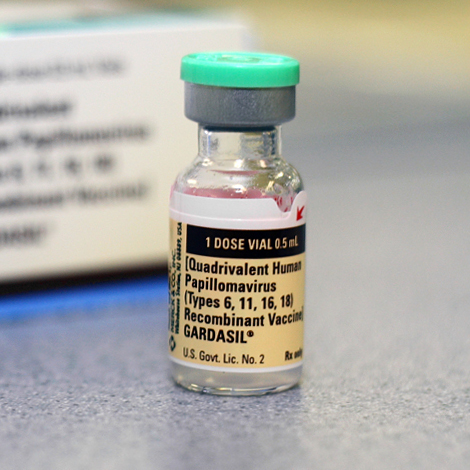#Liquid carbon characterized using a free electron laser
“#Liquid carbon characterized using a free electron laser”

From common soot to precious diamonds, carbon is familiar in many guises, but there have been little more than glimpses of carbon in the liquid form. Researchers at the FERMI Free Electron Laser (FEL) source have now not only generated a liquid carbon sample, but have characterized its structure, tracking the ultrafast rearrangements of electron bonding and atomic coordinates that take place as their carbon samples melt. “As far as I know, that is the fastest structural transition in condensed matter,” says Emiliano Principi, principal investigator on the project.
The work fills in some of the gaps in the element’s phase diagram—a plot of its phases at different temperatures and pressures. Despite the ubiquity of carbon and the interest it garners in so many facets of science—from sensors and solar cells to quantum computing and space rocket protection systems—knowledge of its phase diagram remains patchy. Typically, as soon as solid carbon can’t take the heat, it sublimates to gas. For other materials, researchers can enroll high-pressure cells to prevent the sample expanding straight into a gas at high temperatures, but these are usually diamond, precisely the element the conditions are designed to melt.
Instead, Principi, Claudio Masciovecchio and their team used the FERMI femtosecond pump-probe system to deposit a high-energy load from the pump laser into an amorphous carbon sample and then measure the X-ray absorption spectra by the sample mere hundreds of femtoseconds afterward with a probe laser FEL pulse. Although there have been previous studies of liquid carbon heated using lasers, this is the first that uses laser pulses with a short enough wavelength and time resolution to distinguish the structure of the sample at the timescale of the system’s dynamics.
Strung out
What the researchers saw was a distinctive change in bonding and the atomic arrangement. Amorphous carbon is dominated by the kind of electronic bonding found in graphite and graphene described as sp2, where each carbon atom bonds to three others, forming planes of tightly interacting carbon atoms. As the laser hit the sample, however, this bonding changed to sp1, where each carbon is bonded to just two others, forming strings of carbon atoms. “This is really fascinating in my opinion,” says Principi, as he explains that at that point, there is no time for thermalization by means of phonons, so the adjustment of atomic arrangements from planes to strings follows immediately from the changes in electrostatic potential from the modified bonding. “We have never seen such an ultrafast transition,” adds Masciovecchio, head of the scientific programs of FERMI.
The experiments are complemented by a set of ab initio calculations of the system dynamics by collaborators Martin Garcia and Sergej Krylow at Universität Kassel in Germany. They found excellent agreement between the calculations and experiments, which is “very rare,” as Principi points out, “especially in this class of experiments.” With this theoretical work they were able to pinpoint the temperature reached by the process (a whopping 14,200 K) and the interaction strength between the electrons and phonons in the excited carbon system—17×1018 Wm−3K−1. This parameter quantifying the electron–phonon interaction strength in materials is notoriously difficult to pin down and may be valuable for future simulations.
Short and sweet
The core electrons in carbon absorb at a wavelength of 4 nm, which is why previous experiments using tabletop lasers operating at visible wavelengths have only been able to measure the reflected intensity. Since the experiments generate a plasma, which causes a surge in reflectivity, the sample remains essentially opaque to these measurements. The FERMI FEL can use laser pulses at 4 nm, so the researchers could measure the absorption spectra of core electrons and get a clear idea of how the structure and bonding is affected by the pump pulse. “When you bring the electron into the continuum, the electron will start to see what is going on around it,” says Masciovecchio as he describes the advantage of working with X-ray absorption where the electrons are excited, as opposed to the reflectivity spectra. “It’s telling you the local geometry and local structure—you get very important structural information.”
The set-up at FERMI also has a crucial advantage for time resolution. A free electron laser produces radiation from an electron bunch accelerated to relativistic velocities. Interactions between the electron bunch and undulators—a periodic series of dipole magnets—then amplify the radiation, producing an extremely bright laser source. At FERMI, a table-top laser seeds the free electron laser, and this allows the researchers to synchronize the pump and probe pulse to within 7 femtoseconds compared with around 200 femtoseconds for other free electron laser facilities. This timing precision is key to studies of liquid carbon because of its brief existence—within 300 femtoseconds, the sample starts to thermalize and expand into a gas. “The party is over after half a picosecond,” adds Principi.
The results fill some of the gaps in the phase diagram of carbon. Understanding how carbon-based systems at extreme temperatures and pressures behave could potentially be useful for astrophysics, such as in the study of recently observed carbon-based exoplanets. In future work, Principi and colleagues may apply the same approach to the study of other carbon allotropes to see the effects of different starting densities, as well as to the study of other elements entirely, such as silicon or iron.
More information:
E. Principi et al., Atomic and Electronic Structure of Solid-Density Liquid Carbon, Physical Review Letters (2020). journals.aps.org/prl/accepted/ … 2c91d808d8582fb32caf
© 2020 Science X Network
Liquid carbon characterized using a free electron laser (2020, September 16)
retrieved 16 September 2020
from https://phys.org/news/2020-09-liquid-carbon-characterized-free-electron.html
This document is subject to copyright. Apart from any fair dealing for the purpose of private study or research, no
part may be reproduced without the written permission. The content is provided for information purposes only.
if you want to watch Movies or Tv Shows go to Dizi.BuradaBiliyorum.Com for forums sites go to Forum.BuradaBiliyorum.Com
If you want to read more Like this articles, you can visit our Science category.



